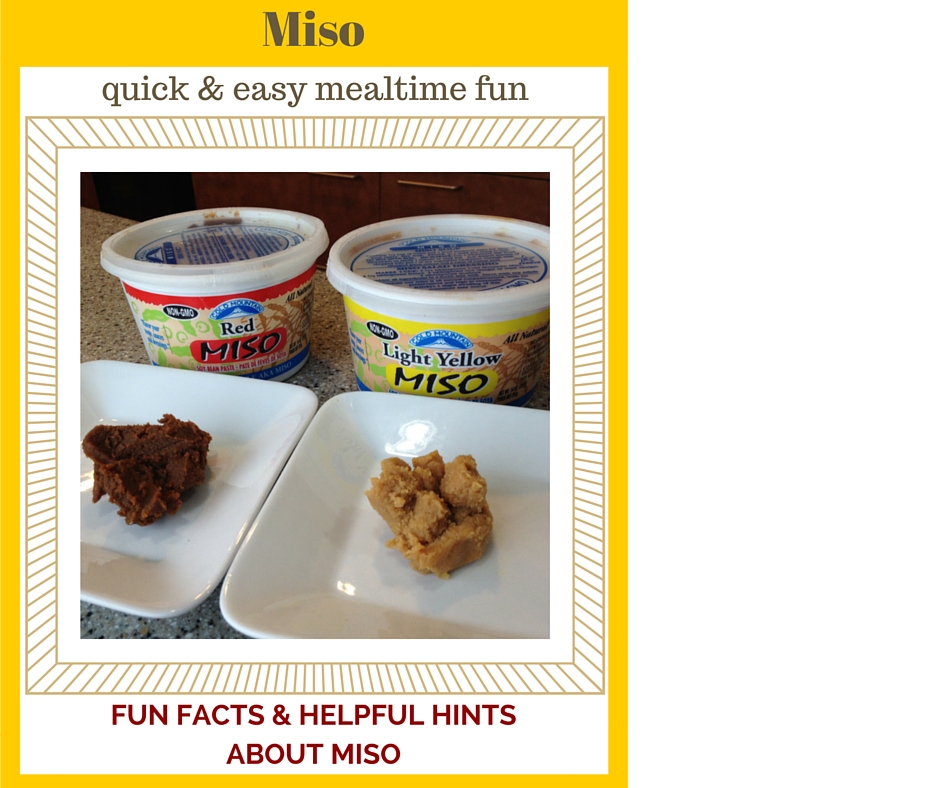 “More mealtime fun” and “excitement” were popular responses in our Mealtime Transformation Survey that we shared in the last post. Happily, it doesn’t take much to brighten up mealtimes. Something as simple as a new ingredient can be completely adequate. Miso, for example, is sure to tantalize your taste buds with its unique salty-sweet or salty-pungent flavor.
“More mealtime fun” and “excitement” were popular responses in our Mealtime Transformation Survey that we shared in the last post. Happily, it doesn’t take much to brighten up mealtimes. Something as simple as a new ingredient can be completely adequate. Miso, for example, is sure to tantalize your taste buds with its unique salty-sweet or salty-pungent flavor.
In last month’s class sponsored by Meals on Wheels of Boulder, we made Miso-Glazed Carrots. A few days later, one participant called and left a message, “I liked the carrots dish so much that I went out and bought the carrots and miso today. It was a great class, thanks Mary.”
Maybe you’re ready for a little miso fun, too? Here’s a little background info, followed in the next post by the recipe for Simple Miso Soup. Email for the Miso-Glazed Carrot recipe.
“Fermented Beans” That’s what “miso” means in Japanese, and generally the “beans” are soybeans, although other grains (like rice and buckwheat) can be mixed in to achieve different flavors; also, there are now misos made with a chickpea base for those who can’t tolerate soy.
What Is It? Miso is a thick paste (like tomato paste), with a richly salty taste that makes a wonderful flavor base for e.g., soups, sauces and dressings–like a bouillon cube but much healthier and better tasting.
Color Matters Although all misos are salty, the lighter (white and yellow) misos are also sweeter while the darker (red and brown) misos are more pungent; recipes will call for one or the other to take advantage of these flavor notes.
It’s a Really Old Food Although we associate miso with Japanese cuisine (and rightly so), it most likely originated in China many thousands of years ago before taking root in Japan as early as the 10th century B.C.
It’s Fermented The Aspergillus fungus is the key micro-organism involved in miso fermentation
It’s High Art “Long before scientists had developed ways of identifying and naming fungi like Aspergillus, cultures in China and Japan had developed special methods of fermenting soybeans that were practical and could be reproduced.” (see reference below)
It’s Really Rich in Nutritional Benefits While I won’t get into all the details, miso is much mightier than any bouillon cube. Read more about all its incredible benefits on the World’s Healthiest Foods website.
It’s an Excellent Pantry Addition First, because it is such a quick way to add a lot of flavor to a dish and secondly, because it can last a long time (a year or so when stored in the refrigerator), so no need to worry if you can’t use it up immediately
Find It Because it needs to be kept cool, find miso in the refrigerated section of your grocery store; even mainstream markets carry it these days.
“Slurry” It Being quite thick, it’s best not to just plop miso into a dish; it will mix in much better if first made into a slurry: place desired amount in a small mixing bowl and gradually whisk in a little warm water until thin enough to mix into your dish.
Avoid Boiling To preserve it’s flavor and nutritional benefits, some sources advise against boiling a dish with miso, although this is not always possible, e.g., when including miso in a glaze. Speaking of glazes, here’s a picture of Miso-Glazed Carrots; email if you’d like another miso recipe to try.
Information on miso drawn from The World’s Healthiest Foods, a good site to bookmark for thorough and impartial nutrition information.

